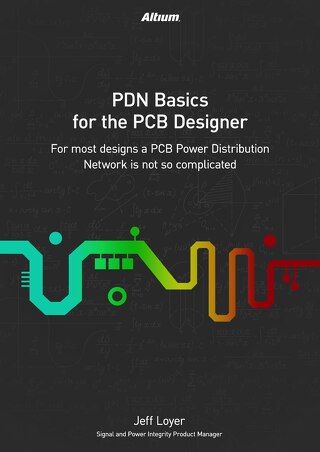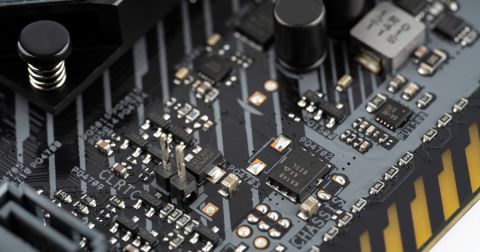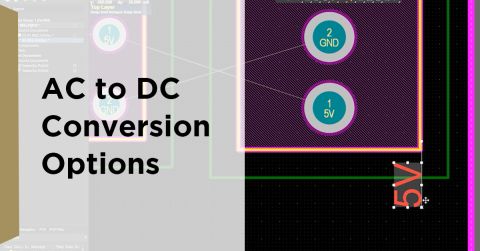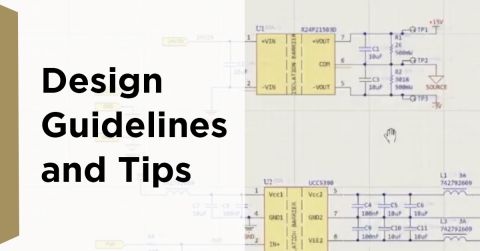Ceramic Capacitors Maximum Voltage and Derating

Operating just about any capacitor below its maximum rated voltage ensures a longer operating life. A capacitor's performance will degrade in response to the application of voltages approaching their rated limit and exposure to high temperatures. By choosing to limit the applied voltage, those degradation effects can be reduced.
Ceramic capacitors are one of the most common types of capacitors that are in use today thanks to their compact packaging and availability of surface-mount components. They get their name from the construction materials; they are built up in alternating layers of metal paste and ceramic powder, which are then baked to solidify the ceramic material. As they are non-polarized components, they can be used in AC and DC circuits and come with a range of capacitance values that make them ideal for use in coupling, decoupling, and filtering circuits.
The maximum voltage rating of the capacitor is nominally high, which is a great advantage. When their rated voltage is exceeded by a small margin, their capacitance drops without any major failure. If exposed to a voltage far outside the rated maximum, the tendency is for the ceramic material to break down, leading to a short circuit between the metal plates. Assuming overcurrent protection is in place, this failure mode will be relatively benign. However, a designer needs to select an appropriate ceramic capacitor voltage derating to ensure this failure doesn't happen during operation so that the lifetime of a new design is maintained.
Importance of Ceramic Capacitors Voltage Derating
An important consideration that needs to be considered is that a ceramic capacitor’s capacitance value will be reduced as the voltage across the component approaches the maximum ceramic capacitor voltage rating. In some components, this reduction can significantly affect the operation of the circuit. This effect is strongly influenced by the physical size of the component. A 1206 SMD ceramic capacitor will lose rated capacitance much more slowly than a 0603 SMD ceramic capacitor of the same rated values. This effect is also more prominent in components with a high dielectric constant, such as devices with Class II-type dielectric characteristics (for example, B/X5R and R/X7R). This effect can be problematic when a DC bias voltage exists across ceramic capacitors in signal processing circuits.
The bias voltage can significantly reduce the overall capacitance affecting the base circuit's operating characteristics. The signal voltage superimposed on top of the bias voltage can exacerbate or alleviate this change, depending on its polarity, causing a change in capacitance proportional to the signal voltage. The consolidated effect is a non-linear performance due to the changes in capacitance. This issue can be resolved by ensuring that the capacitor maximum voltage calculated from the peak signal voltage and DC bias voltage remain within the region of the component’s capacitance characteristics, where the change in capacitance is minimal. This may require careful selection of a component with dielectric characteristics that meet the designer’s requirements.
Another influence on ceramic capacitor derating is exposure to fast transients within the rated voltage limit. While the voltages remain within limits, the rate of change of the voltage can degrade the ceramic materials over time, reducing the life of the component and increasing the probability of failure.
What Ceramic Capacitor Derating Should You Use?
There is a common rule of thumb that the ceramic capacitor voltage rating rule should be derated by at least 25% as standard, but in environments where they will be exposed to voltage ripple effects, this should be increased to at least 50%. The maximum rated voltage for the component should be at least double the capacitor maximum voltage that can be applied to the component in normal operations.
A more accurate calculation can come from looking at the relationship between the breakdown voltage and the maximum rated voltage. Typically, manufacturers calculate the maximum rated voltage by adding a margin based on experience and judgment to the breakdown voltage. The breakdown voltage is determined by the characteristics of the materials used in the construction of ceramic capacitors and the presence of defects in the materials. The higher the manufacturing process’s quality, the higher the breakdown voltage – limited by the materials used. Interestingly, the higher the value of capacitance, the lower the effect any manufacturing defects will have on the breakdown voltage.
The ceramic-based insulating material properties dominate the calculations; studies have shown that the metal elements have little influence on the results. The breakdown voltage is generally determined by the polarization processes within the dielectric rather than any electrical breakdown. Manufacturers determine the breakdown voltage by identifying the region within the components’ operating characteristics. The voltage-dependent qualities remain within the device’s required limits, and its predicted reliability falls within the specified range. Any derating applied by the designer will then be in addition to the manufacturer’s derating factor, used to calculate the maximum ceramic capacitor voltage rating from the breakdown voltage.
One thing to bear in mind is that over-derating a component may, at first sight, appear to be the safest policy, but this will result in the selection of physically larger or much more expensive components. The extra board space required may not be feasible or could cause other challenges with the layout and routing of the board. Larger components also carry an increased risk of fracturing within the component in an environment where mechanical vibrations may be present. As with all design decisions, some consequences need to be thought about carefully.
If you want to know more, why not browse our product page for a more in-depth feature description or call an expert at Altium? Start your free trial of Altium Designer + Altium 365 today.










